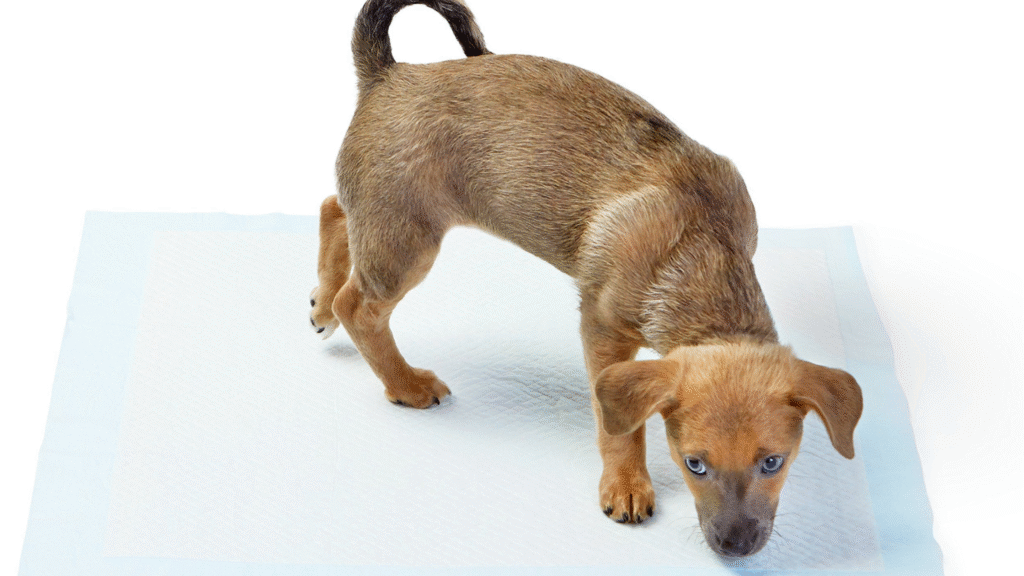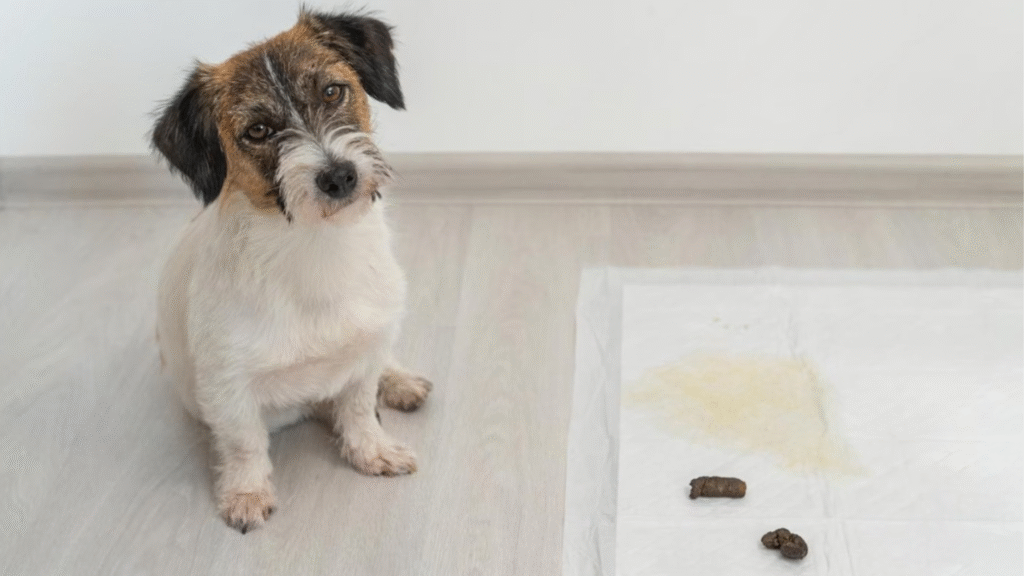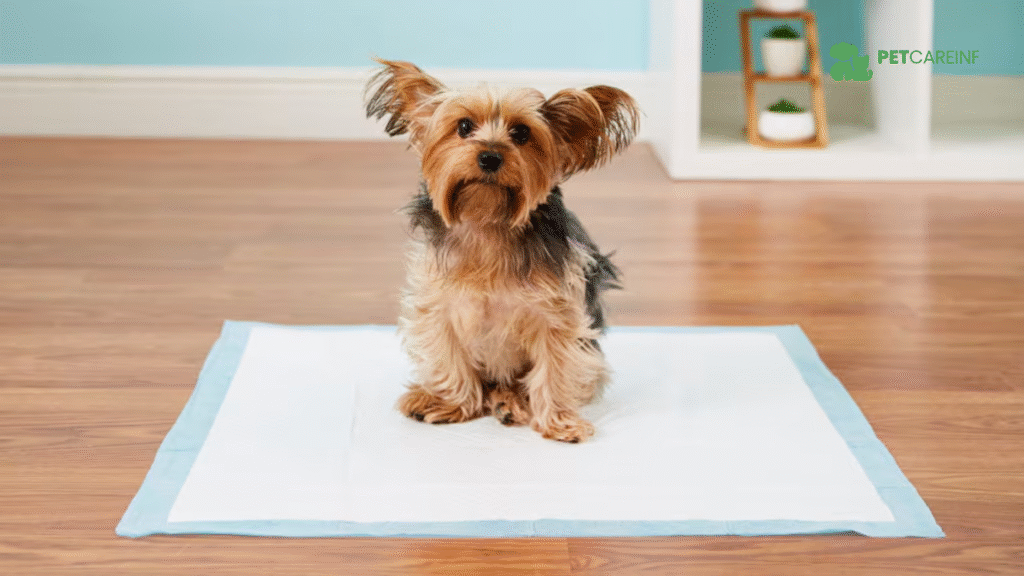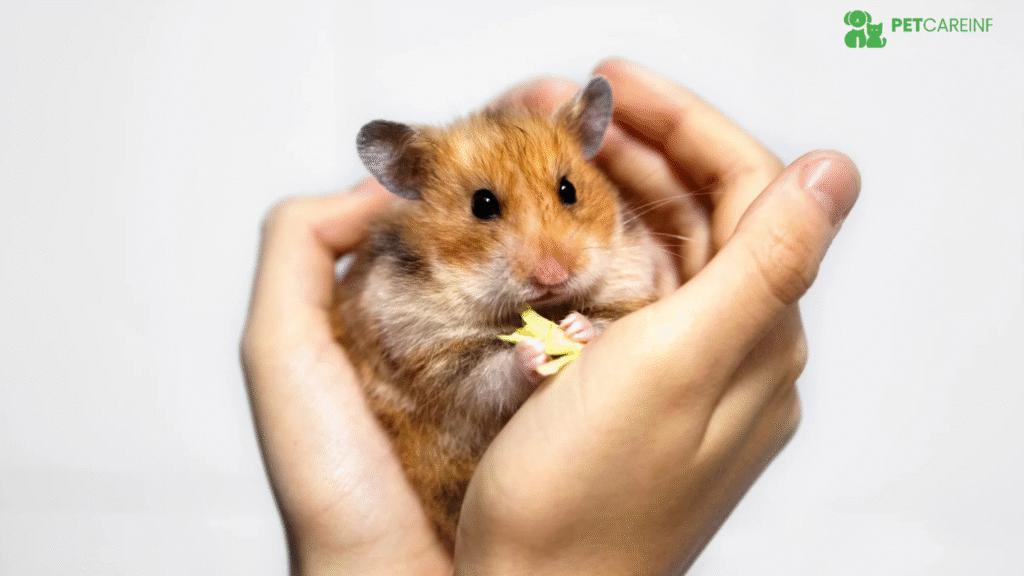House training a new pup can feel like a maze, busy schedules, surprise accidents, and too many product choices. One tool that makes everything easier is pads puppies (puppy pads). Used correctly, they protect your floors, build great habits, and reduce stress for both of you.
This guide covers everything: how to pick the best puppy pads, set up the ideal potty area, train step-by-step, fix common issues, and transition outside when you’re ready.
Why Use Pads Puppies?
When you bring home a puppy, you’re not just getting a pet, you’re beginning a lifelong relationship. The first step in building that bond is setting boundaries, and potty training is one of the most essential ones.
Using pads puppies provides several advantages for both you and your pet. They are ideal for apartment living, during bad weather, or when regular outdoor walks aren’t possible. A potty training pad helps puppies learn where to do their business, preventing unwanted accidents around the house.
These pads also offer a safe environment for puppies with medical or mobility issues, while maintaining a cozy and stress-free living space for both owner and pet. In conclusion, pads puppies provide versatility and convenience in training without compromising hygiene or your furry friend’s well-being.
Types of Puppy Pads & How to Select Which Is Best
Choosing the right type of pad is essential for successful potty training. Each type of pads puppies serves a different purpose depending on your dog’s habits, environment, and your household’s lifestyle. Here’s a breakdown to help you decide which one works best for your furry friend.
1. Standard Pee Pads
The most common choice among dog owners, standard pee pads feature a single-layer absorbent surface with a non-slip backing. They’re simple, affordable, and effective. Best for: frequent daily potty training and first-time puppy owners.
2. Dual‑Layer Pads
These pads puppies are designed with double-wicking fabric that offers superior moisture absorption. They handle more liquid and dry faster, minimizing odor and leaks. Best for: accident-prone puppies or multi-puppy homes where several dogs share the same pad.
3. Scoopable Design Puppy Dog Pads
Innovative and practical, these pads puppies come with a small container or scoop system at the bottom for quick waste disposal. They help maintain cleanliness and reduce mess. Best for: detail-oriented owners who want an easy, hygienic cleanup process.
4. Doggie Pee Pads (Eco‑Friendly)
Crafted from recycled materials with biodegradable liners, these pads puppies are an excellent sustainable option that helps reduce waste. Best for: environmentally conscious families looking for green, guilt-free training solutions.
5. Doggie Pee Pee Pads (Specialty Pads)
These extra-thick pads feature an upraised rim to prevent spills and splashes. Their durable structure makes them long-lasting and ideal for active dogs. Best for: energetic, bouncy puppies that tend to splash or move around while using the pad.


How to Pick the Right Pad
Choosing the right pads puppies depends on your dog’s size, habits, and your cleaning preferences. Each feature plays a key role in comfort, hygiene, and effectiveness — here’s what to consider when selecting the perfect pad:
| Feature | What It Means | What to Look For |
| Absorbency | Determines how much liquid the pad can hold before leaking. | Choose dual-layer or thicker pads for heavy-moisture or frequent-use puppies. |
| Size | Larger pads puppies provide more space and reduce mess. | Match the pad size to your puppy’s breed and age; increase as they grow. |
| Non-Slip Backing | Prevents the pad from sliding during use. | Opt for pads with a rubber or silicone base for extra stability. |
| Odor Control | Helps neutralize unpleasant smells and keeps the area fresh. | Look for pads infused with baking soda or activated charcoal. |
| Eco-Friendly Claims | Indicates the sustainability and environmental impact of the materials. | Pick certified biodegradable or compostable pads for a greener option. |
Set Up the Perfect Pad Area
A good pad zone plan is the key to successful training.
- Choose a Quiet Spot: Avoid crowded hallways or high traffic places. A calming environment is necessary for puppies to concentrate.
- Keep It Consistent: Do the pad at the same place each day. Repetition strengthens the learning process.
- Use a Ramp or Steps: If your puppy is a little tall, a small ramp can be used to get them onto the pad safely.
- Maintain Hygiene: Change the pad at least once a day or more, if it’s soiled Clean with a pet-safe odor cleaner.
- Add a Scent: Though for some animals you may have to place a small amount of lavender or an odor-free dog deodorizer beside the pad to help create a positive association.
Step-by-step Training Process
Establishing a Routine
- The Golden Rule: Puppies love routine.
- Feed at the Same Times: Puppies typically need to go after eating.
- Puppy Born Potty Training Bathroom Breaks – Take your puppy out to the pad as soon as it pees after eating, drinking, waking up, or playing.
- Uninterrupted – Take them to the pad every 1-2 hours in the first week and gradually increase the interval.
Using Scent Marking
- Puppies communicate using their nose.
- Marking Area: When first putting down the pad, put a small area of puppy-approved pheromone spray, or a drop of your own scent on it.
- But be sure to let your puppy smell the pad to help leave a sensory memory.
Positive Reinforcement
The best way to teach your puppy that where the pad is the proper place is with rewards.
- A compliment (Praise) – Visual/Auditory – Good job! said with a smiling voice.
- Reinforce: Offer a small treat (e.g. 1-2 gram chew).
- Play: Play a quick game of tug or catch.
- Consistency: Continue to reward every successful time, this creates a good positive link.
Staging the Move to Outdoor Restroom
When your puppy is comfortable enough to use the pad, it is time to transition outside.
- Set Up Cues for Outside – Give a specific word (e.g., Go potty or Outside) before they go outside.
- Gradual Transition: Move the pad away from the door, a yard, a mile, then lose the pad and let them go outside.
- Success Outside: Reward and commend as you did with the pad.


Common Issues and Troubleshooting
| Problem | Cause | Solution |
| Accidents on floor | Pad not placed in a calm spot. | Move the pad to a quieter, low-traffic area. |
| Puppy hesitates to use the pad | Negative association from previous accidents. | Re-introduce with a fresh pad and repeat the training routine consistently. |
| Odor buildup | Pads not being changed frequently enough. | Replace pads after each use or at least twice daily to prevent smells. |
| Puppy refuses to get on the pad | The pad is too high or slippery. | Add a non-slip mat underneath or use a small ramp for easy access. |
| Puppy’s urine stains carpet | The pad lacks absorbency. | Switch to a dual-layer or thicker pad to prevent leakage and staining. |
Top Brands & Product Recommendations
When selecting pads puppies, it’s important to choose ones that balance absorbency, odor control, and comfort. Below are three of the best-rated puppy pad brands on Amazon that pet owners trust for performance, durability, and value.
Amazon Basics Dog and Puppy Pee Pads
These 5-layer, leak-proof Amazon Basics pads are the gold standard for everyday training. The built-in attractant draws puppies to the pad, while the quick-dry core locks liquid into gel on contact—perfect for apartments or rainy days.
Why it’s great:
- 5-layer leak-proof design with a quick-dry surface
- Turns liquid into gel instantly to prevent tracking
- Built-in attractant for faster potty training success
- Plastic border prevents overflow and keeps floors protected
Best For: New puppy parents and indoor training setups.
IMMCUTE Large Dog & Cat Puppy Pee Pads
Designed with 6-layer polymer protection, IMMCUTE pads are ideal for large breeds or multiple puppies. Their flash-dry technology turns liquid into gel immediately—keeping your space dry, odor-free, and stress-free.
Why it’s great:
- 6-layer absorbent design for heavy-duty protection
- Flash-dry tech prevents overflow and odor buildup
- Soft, hypoallergenic quilted top for sensitive paws
- Works well in kennels, crates, and travel carriers
Best For: Households with multiple dogs or large-breed puppies.
COCOYO Best Value Training Pads
A budget-friendly favorite, COCOYO pads combine affordability with quality. Their 5-layer structure absorbs up to 2 cups of liquid, and the built-in attractant helps your pup learn faster. Despite the low price, they compete with premium brands in absorbency and leak protection.
Why it’s great:
- Quick-dry surface with 5 protective layers
- Built-in attractant for efficient pad training
- Leak-proof back layer keeps floors clean
- Suitable for all dog life stages
Best For: Pet owners seeking reliable performance on a budget.










Pro Tips & Hygiene
- Water Schedule: Offer frequent water but avoid huge chugs right before bedtime.
- Night Plan: Smaller confinement area (playpen) with bed + pad zone.
- Cleaning: Use enzyme cleaner only (ammonia smells like urine).
- Surface Rules: Block tempting soft spots (bath mats, shag rugs) in early weeks.
- Consistency = Speed: Same place, same cue, same reward—every time.
Conclusion
Training your puppy to use pads is simpler when you pair the right product with a consistent routine. Choose pads puppies that match your pup’s size and absorbency needs, keep the pad area calm and clean, and reward every success.
Tackle common hiccups, slips, odors, hesitation, with non-slip bases, frequent changes, and patient re-introductions. As reliability improves, gradually transition outdoors using the same cues. Whether you prefer budget picks, heavy-duty options, or eco-friendly pads, consistency and positive reinforcement are what make house training stick.
Frequently Asked Questions
How long does it take to train a puppy on puppy pads?
Most puppies learn to consistently use pads puppies within 2 to 4 weeks, depending on age, routine, and consistency. Young pups may need more time, while older ones often adapt faster with positive reinforcement and frequent breaks.
What is the fastest way to potty train a puppy?
The quickest method is structured repetition — take your puppy to the pad every 1–2 hours, especially after eating, sleeping, or playing. Use the same verbal cue (“Go potty!”), reward success immediately, and never punish accidents.
What is the 10-10-10 rule for potty training puppies?
The “10-10-10 rule” means:
- Take your puppy to the pad 10 minutes after eating,
- Let them sniff or sit for about 10 minutes, and
- Reward them for success within 10 seconds of going.
- It builds a clear connection between timing, location, and reward.
What is the 3-day potty training trick?
The 3-day method involves intensive supervision: confine your puppy to a small area, bring them to the pad every 30–45 minutes, and praise each success. By day three, most puppies start seeking the pad on their own.
What is the 10-minute rule for puppies?
Puppies typically need a potty break every 10 minutes per month of age. For example, a 2-month-old puppy can usually hold it for about 20 minutes — consistency prevents accidents.
How do you attract a puppy to a pee pad?
Use pads with a built-in attractant or spray a puppy-safe pheromone attractant on the pad. Allow your pup to sniff, and guide them to the pad frequently. Reward them every time they use it correctly to reinforce the behavior.



